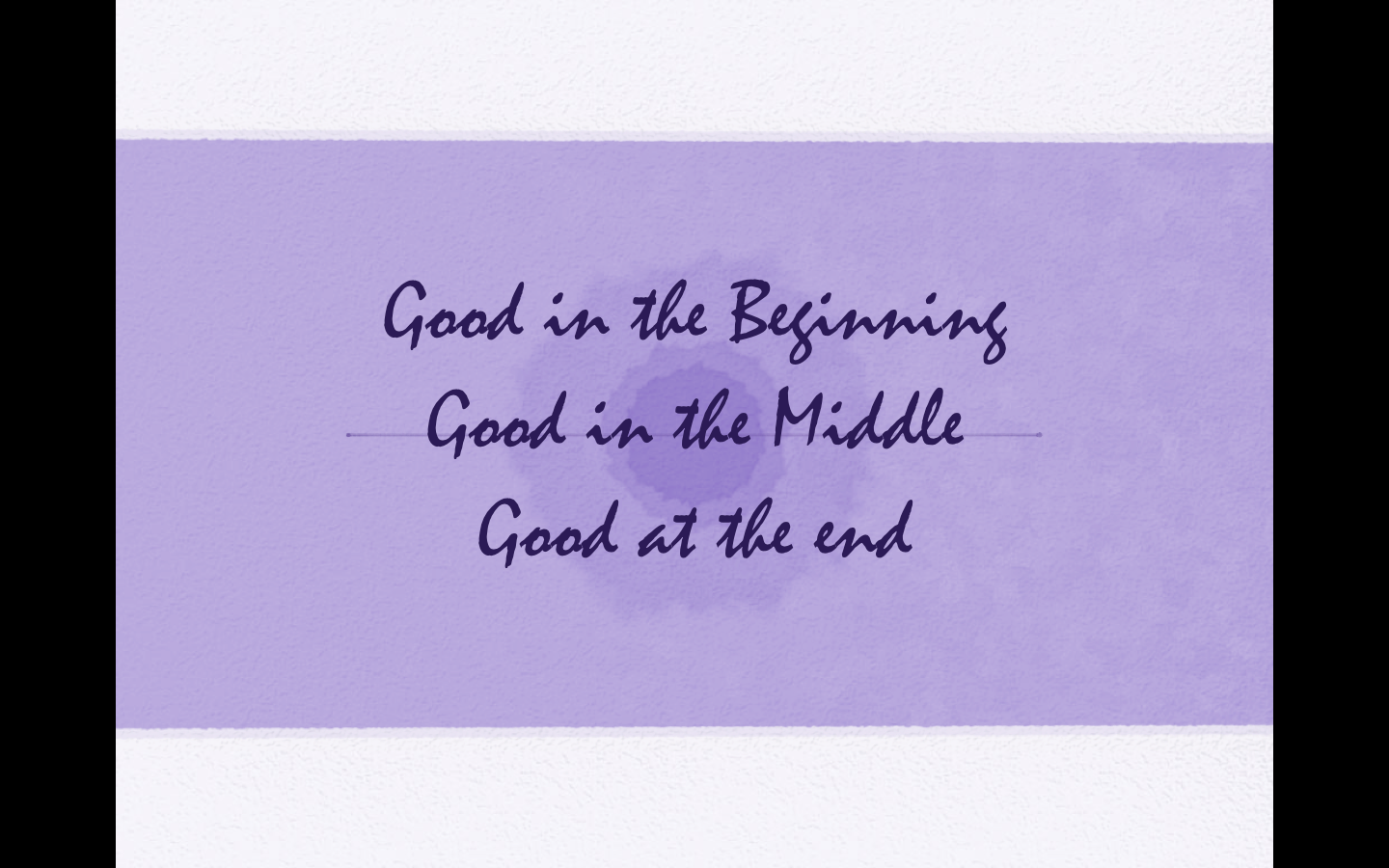Good in the Beginning

I came across another piece of advice about meditation that I found useful, and thought I would share it, this from The Tibetan Book of Living and Dying, by Sogyal Rinpoche, a book that was recommended to me about fifteen years ago and was one of the first books I ever read about meditation.
In a chapter on meditation, called “Bringing the Mind Home,” he talks about a method for making meditation more powerful and useful. He calls it, “Good in the Beginning, Good in the Middle, and Good at the End.”
Good in the beginning refers to setting a positive motivation at the beginning of the work. Good in the Middle refers to doing our best, and having as clear a mind as possible, while we’re doing the practice. And then Good at the End is remembering, when we finish, to simply dedicate the work—that it will become of benefit to ourselves, and, if this makes sense to us, that it will also, in some way, begin to benefit others.
I like the symmetry of this advice and the way it can frame one’s work, and I’ve been trying to put it into practice, not just for meditation, but for writing as well:
- Good in the Beginning: May this writing be for the benefit of myself, for all who come across it—and for all sentient beings.
- Good in the Middle: Trying to stay clear and aware and focused as I work.
- Good at the End: Remembering to dedicate the work—may this writing be of benefit for all sentient beings.
I think there could be countless ways to adapt this.
What could make your own work good in the beginning, good in the middle, and good at the end?
The book, The Tibetan Book of Living and Dying, can be found here.
